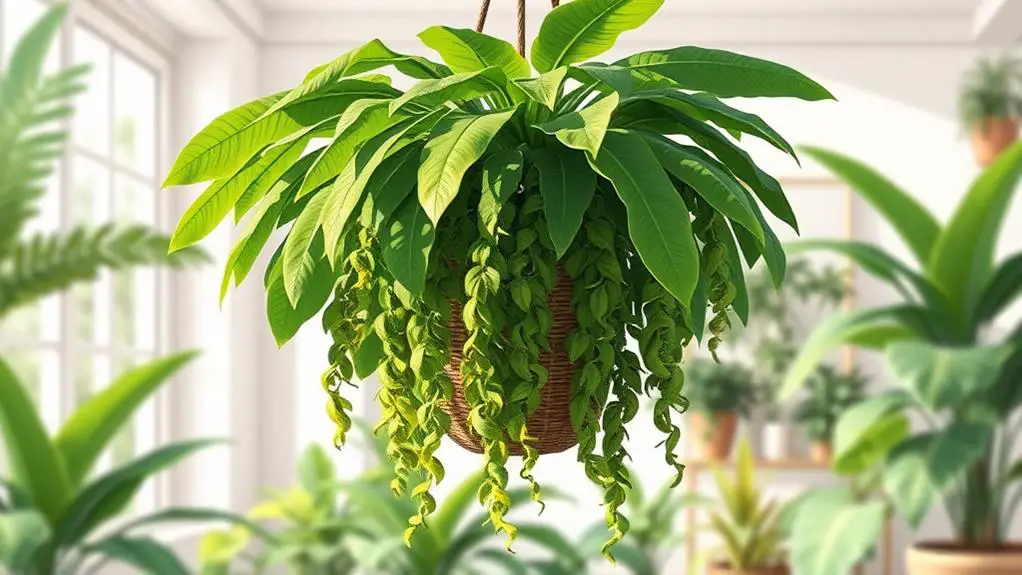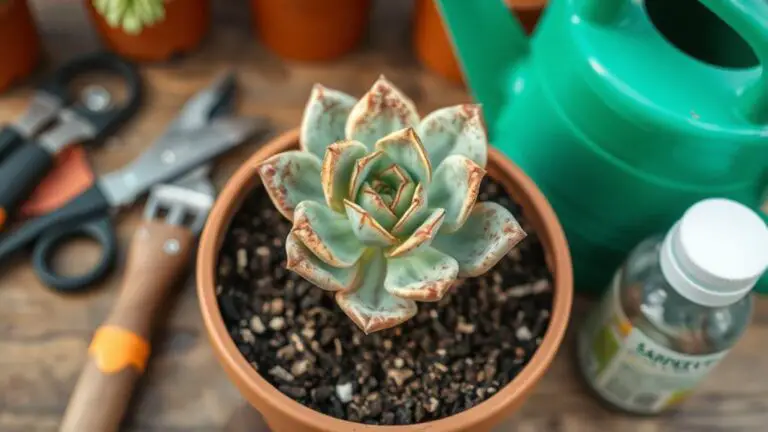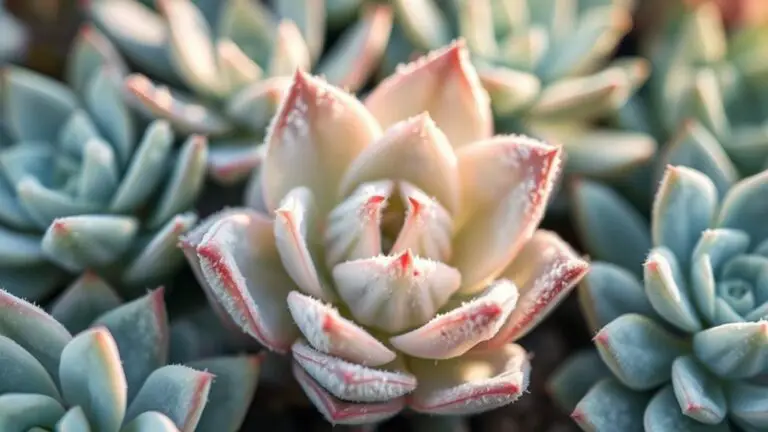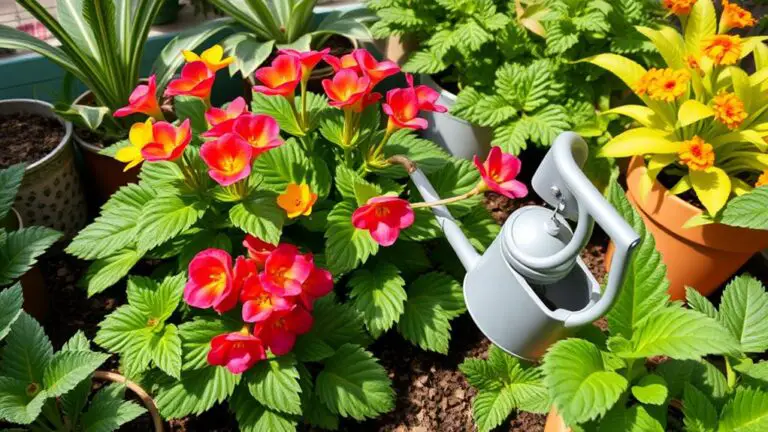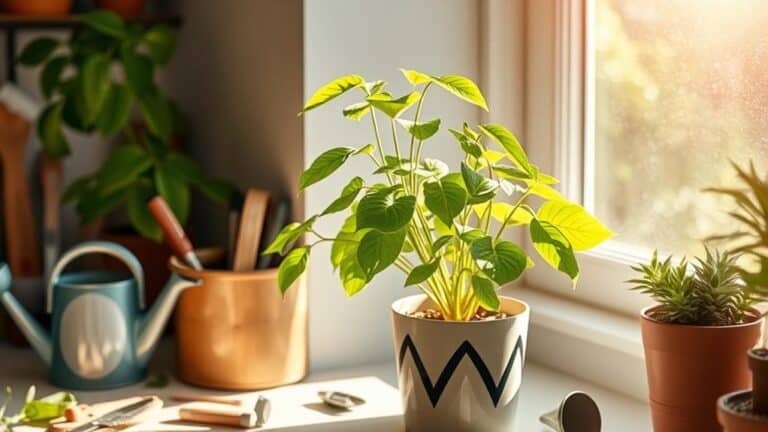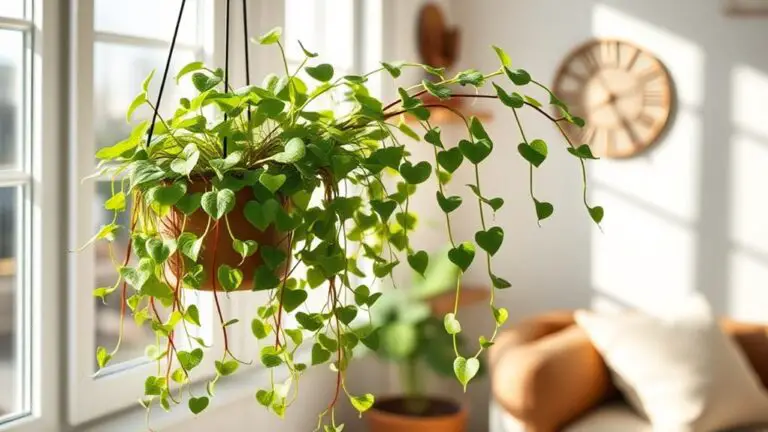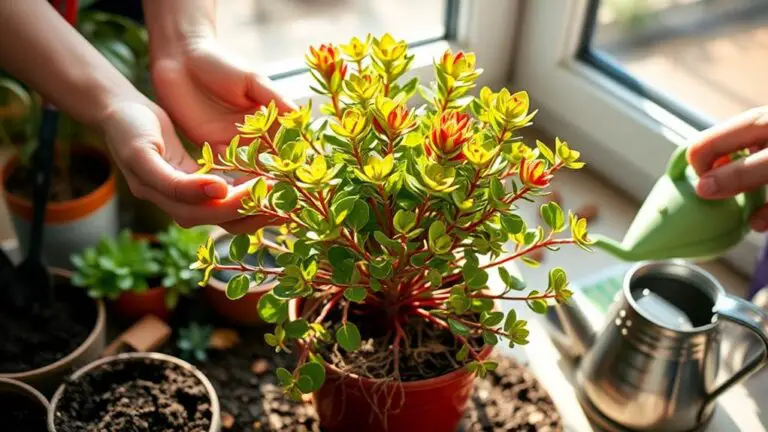Complete Guide to String of Bananas Care
If you're looking to master the care of String of Bananas, you'll need to understand its specific needs and characteristics. This guide will walk you through everything from choosing the right soil to ensuring proper watering and light conditions. You'll also learn how to manage temperature and humidity to create an ideal environment for growth. Whether you're a novice or an experienced gardener, these tips will help you keep your plant thriving. But what about common issues like pests and root rot? Let's explore how to tackle those next.
Plant Characteristics
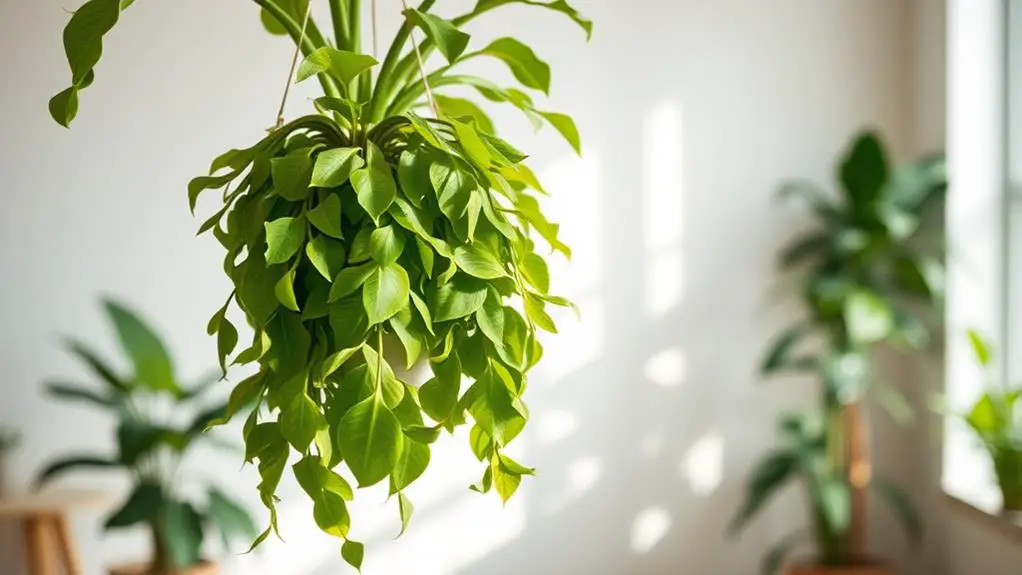
The String of Bananas, scientifically known as Curio radicans, is a fascinating succulent recognized for its banana-shaped leaves that can grow up to 1 inch in length and trail up to 3 feet.
This plant stands out because of its thicker and less delicate stems compared to its relative, the String of Pearls, making it more resilient and easier to care for.
When you're growing a String of Bananas, it's important to understand its soil and water needs. This succulent prefers well-draining soil to prevent root rot. A good mix would be a cactus or succulent soil, which you can find at most garden stores.
If you're making your own soil mix, combine regular potting soil with sand or perlite for better drainage.
Watering your String of Bananas is simple once you get the hang of it. Water the plant thoroughly, allowing the soil to dry out completely between waterings.
Over-watering can lead to root rot, so pay attention to the soil's dryness before adding more water. This plant can tolerate some neglect, which makes it a great choice for beginners or those who tend to forget their watering schedule.
Ideal Light Conditions
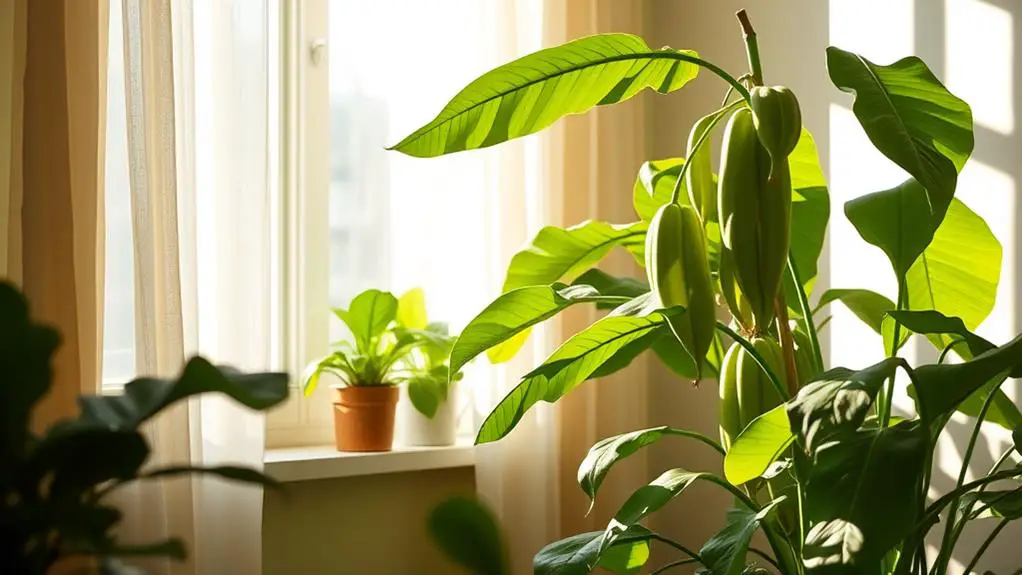
When setting up your String of Bananas, aim for bright, indirect light to keep it thriving. Place your plant near unobstructed eastern or western windows for the best results. These locations provide ample light without the harshness of direct sun rays. If you expose your plant to prolonged, direct sunlight, especially from south-facing windows during peak hours, the leaves can scorch and turn brown.
On the other hand, too little light isn't good either. Insufficient light can lead to slower growth and make the leaves thin and weak. So, it's essential to monitor the light conditions carefully to guarantee your plant stays healthy.
Rotate your plant every 3-6 months to guarantee even light distribution, which prevents one side from becoming leggy while the other stays full.
Also, try to mimic its natural habitat as much as possible. Avoid placing your String of Bananas in areas with cool drafts or where the temperature fluctuates drastically.
Keeping these tips in mind will help you maintain a vibrant and healthy plant that brightens up your space. With the right light conditions, your String of Bananas will flourish beautifully.
Soil Requirements
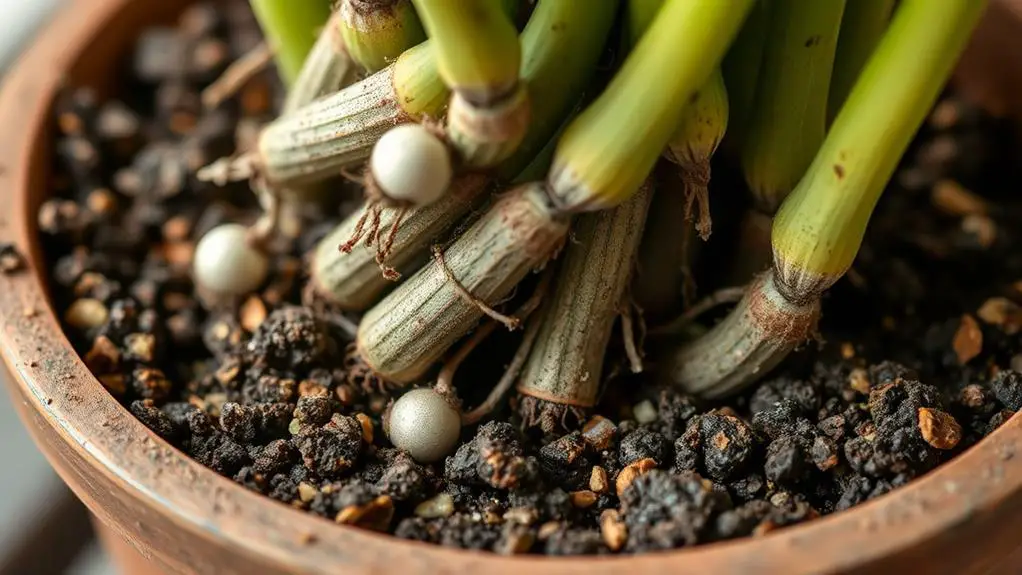
To keep your String of Bananas thriving, use a well-draining soil mix made of 2 parts cactus or succulent mix, 1 part perlite, and 1 part sand.
Avoid regular potting soil since it holds too much water and can cause root rot.
Make sure your pot has drainage holes to let excess water escape, keeping the roots healthy and happy.
Best Soil Mixes
A key to thriving String of Bananas plants is choosing the right soil mix. You want to aim for well-draining soil to prevent root rot and promote healthy growth. The best soil mixes for these plants usually consist of equal parts cactus/succulent mix and pumice. This combination guarantees that excess water drains away quickly, keeping the roots dry and happy.
If you prefer a more DIY approach, try a mix of 2 parts potting soil, 1 part perlite, and 1 part sand. This blend offers excellent drainage and aeration, essential for your String of Bananas. You can also find pre-mixed options like the String of Things soil blend, which is specifically designed for these plants.
When using regular potting soil, make certain to amend it with additional pumice or perlite to enhance its drainage capabilities.
And remember, repotting your String of Bananas every couple of years with fresh soil is vital for maintaining healthy growth and preventing root-bound issues.
Here's a quick summary to help you:
- Use well-draining soil to prevent root rot.
- Mix equal parts cactus/succulent mix and pumice for the best results.
- DIY mix: 2 parts potting soil, 1 part perlite, 1 part sand.
- Consider pre-mixed options like String of Things soil blend.
- Repot every couple of years with fresh soil.
Drainage Importance
Guaranteeing proper drainage is vital for the health of your String of Bananas. Without it, your plant is at risk of root rot, a common problem caused by soggy soil. To avoid this, you need well-draining soil. A cactus or succulent mix works best because it doesn't hold onto water for too long. Mixing in pumice or perlite, at a ratio of half and half with the succulent mix, further enhances drainage.
Using pots with drainage holes is essential. These holes let excess water escape, preventing it from sitting at the bottom of the pot and causing root issues. Choosing the right pot size is also important. Overly large pots can retain too much moisture, so pick one that's just big enough for your plant's roots.
Regularly check the soil moisture. Let the top half of the potting mix dry out completely before you water it again. This practice helps keep the soil from becoming too wet.
Soil Amendments
When it comes to soil amendments for your String of Bananas, prioritizing a well-draining mix is essential. This plant thrives best in a soil mix that prevents root rot, which means you'll need a smart blend to guarantee healthy growth.
A great starting point is combining half cactus/succulent mix with half pumice. This combination allows water to flow freely, keeping the roots dry and healthy.
If you don't have pumice, another effective soil mix includes 2 parts cactus/succulent mix, 1 part perlite, and 1 part sand. This mixture adds extra drainage, making sure your plant remains happy.
Regular potting soil can work too, but you'll need to amend it with pumice or perlite to achieve the right drainage properties.
Repotting is best done in the spring or summer, giving your plant a fresh start during its growing season. Make sure the new pot is at least 10% larger than the old one to accommodate growth.
Here are some key points to take into account:
- Half cactus/succulent mix and half pumice for ideal drainage
- Alternative mix: 2 parts cactus/succulent mix, 1 part perlite, 1 part sand
- Amend regular potting soil with pumice or perlite
- Repot during spring or summer
- Use pots with drainage holes to prevent water accumulation
Watering Practices
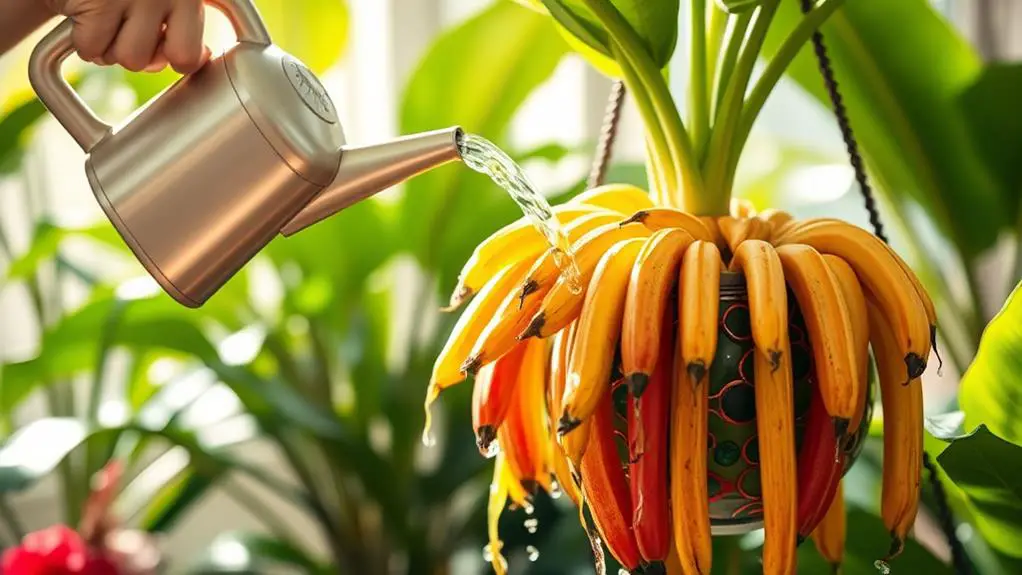
How often should you water your String of Bananas? Proper watering practices are vital to keeping your plant healthy and preventing issues like root rot. Typically, you should water your String of Bananas thoroughly every 2-3 weeks.
Make certain the soil is completely dry before the next watering. To check for dryness, insert your finger into the top two inches of soil. If it feels dry, it's time to water.
Using a well-draining potting mix is essential. This helps excess water escape and prevents the plant from sitting in water, which can lead to root rot.
During the winter months, reduce the frequency of watering. The plant's growth slows down, and it needs less water, allowing the soil to dry out more completely between waterings.
Watch out for signs of overwatering, such as yellowing leaves and mushy stems. These symptoms mean you should adjust your watering schedule immediately.
Remember, it's better to underwater than overwater with this plant. By following these watering practices, you'll promote healthy root development and a thriving String of Bananas.
Your careful attention will guarantee your plant stays vibrant and beautiful all year round.
Temperature and Humidity
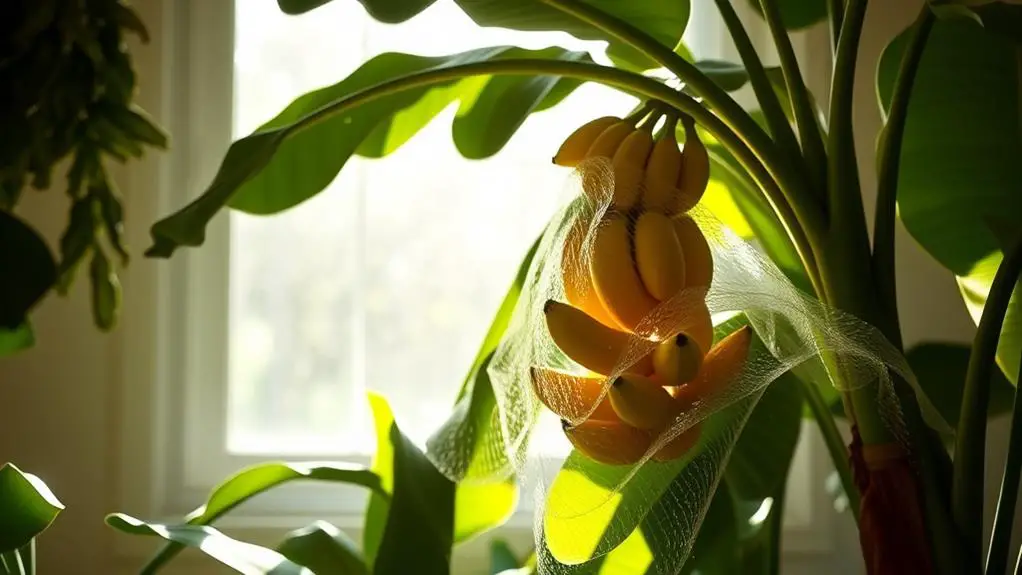
After establishing a proper watering routine, it's equally important to contemplate the temperature and humidity requirements for your String of Bananas.
These plants thrive in temperatures between 65°F and 80°F (18°C to 27°C). For ideal growth, make sure they stay above freezing temperatures of 32°F (0°C). They're sensitive to cold drafts, so keep them away from temperatures below 50°F (10°C) to prevent stress and damage.
String of Bananas prefers a dry environment, which mimics their natural habitat. Aim for humidity levels below 50%. Be cautious of temperature fluctuations as they can hinder growth. Maintaining a stable environment is vital for their health. During winter, avoid placing them near open windows to protect them from cold drafts.
Here are some tips to help you manage the temperature and humidity for your String of Bananas:
- Keep the temperature between 65°F and 80°F (18°C to 27°C).
- Avoid exposing them to temperatures below 50°F (10°C).
- Maintain humidity levels below 50%.
- Protect the plant from cold drafts, especially in winter.
- Maintain a stable environment to prevent growth hindrance.
Fertilization Tips
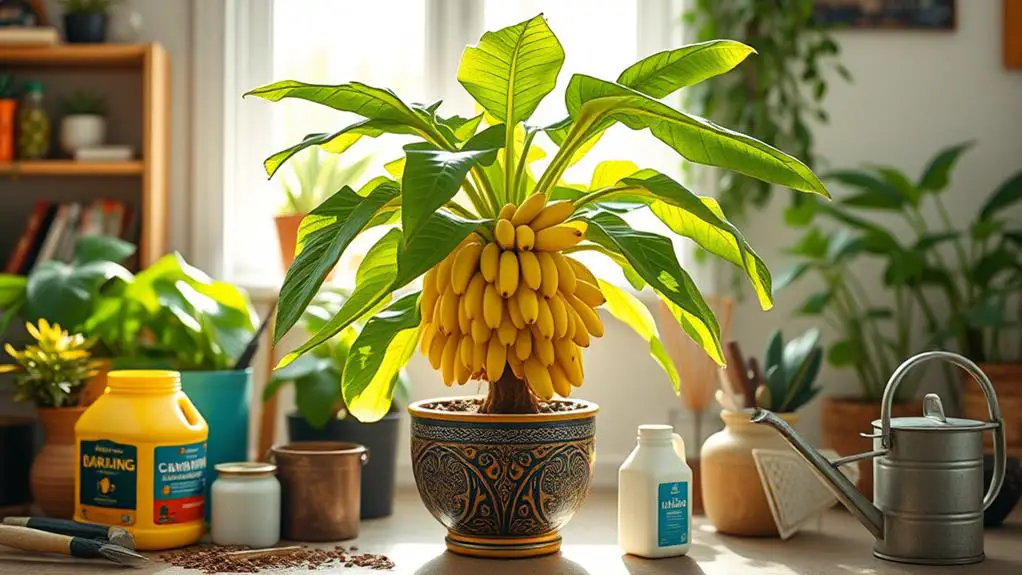
Fertilizing your String of Bananas is essential for their robust growth and overall health. During the growing season, which spans spring and summer, it's important to fertilize your plant with a balanced liquid fertilizer. Aim to apply 2-4 feedings per season for peak growth.
When using liquid fertilizers like Grow Big or Liquid Kelp, make sure to dilute them to a 50/50 ratio with water. This helps prevent root burn and guarantees the plant can safely absorb the nutrients.
Be mindful of the timing. Avoid fertilizing during the winter months when the plant is dormant. Doing so can lead to nutrient buildup, which might harm your plant. Instead, focus on feeding it during its active growth period.
Additionally, you can use local worm compost sparingly to enrich the soil. It provides extra nutrients without overwhelming the plant.
Keep an eye on the growth phase of your String of Bananas to adjust your fertilization schedule as needed. This guarantees healthy and vigorous development.
Propagation Methods
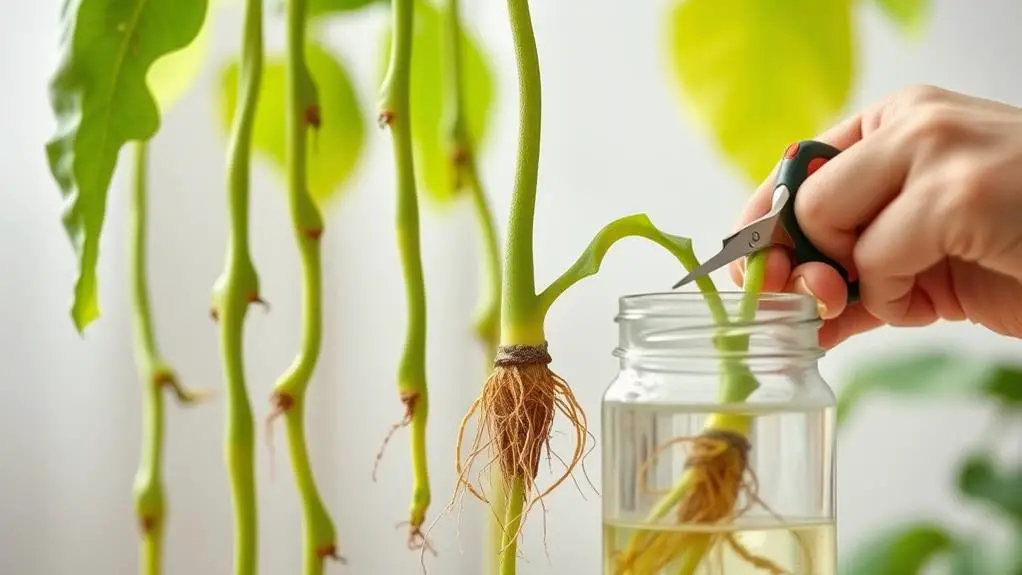
Propagating String of Bananas is a straightforward process that can greatly expand your plant collection. To get started, you'll need to take healthy stem cuttings in spring or summer. Choose cuttings that are 4 to 6 inches long and cut just below a leaf node.
After cutting, remove the bottom 2 to 3 leaves and let the cuttings sit for 24 to 48 hours to callus. This step is important to prevent rot when you plant them.
Once the cuttings have callused, plant them in a well-draining soil mix. Give them a deep watering, but be sure to keep the soil dry between waterings to avoid over-watering.
Patience is key here, as new roots can take a few weeks to develop. Regular misting can help maintain humidity, which is beneficial for root growth.
Here are some tips to help you succeed:
- Choose healthy stem cuttings for the best results.
- Allow cuttings to callus to prevent rot.
- Use a well-draining soil mix.
- Follow a careful watering schedule to avoid over-watering.
- Be patient and mist regularly for humidity.
Common Pests and Problems
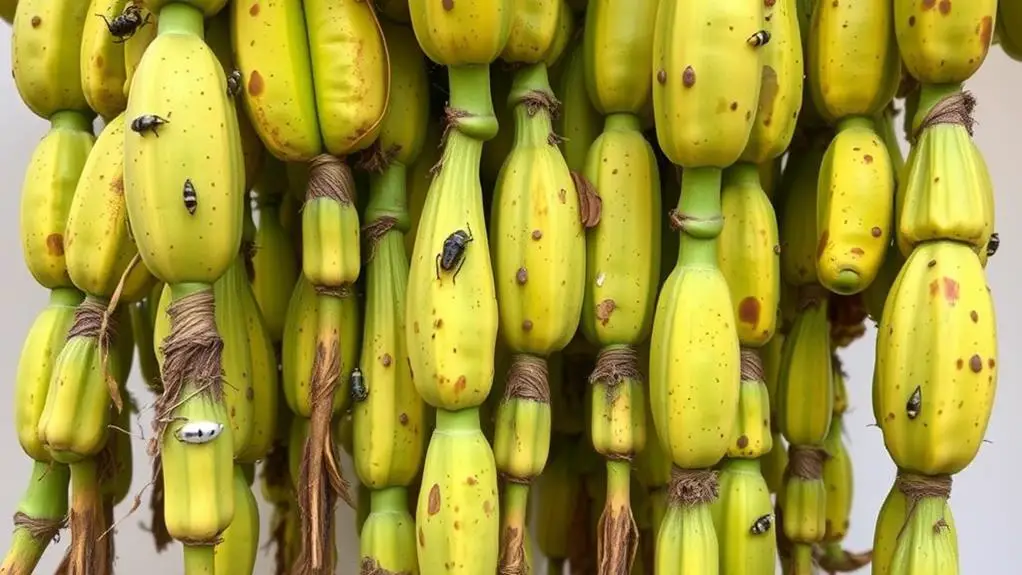
While propagating String of Bananas can be rewarding, it's equally important to be aware of common pests and problems that can affect your plant. Pests like aphids, mealybugs, and spider mites often target String of Bananas. These tiny invaders can cause significant damage if not caught early.
Regularly inspecting your plant is essential. Look for signs like sticky residue, webbing, or tiny bugs on the leaves. If you spot any, treat them immediately with insecticidal soap or neem oil.
Overwatering is another common issue. When the soil stays too wet, it can lead to root rot. You'll notice symptoms like mushy stems and yellowing leaves.
To prevent this, always let the soil dry out completely between waterings. Make sure your pot has good drainage to avoid water buildup.
Insufficient light can also cause problems. If you see leggy growth and thin leaves, your plant probably needs more light. Move it to a brighter spot but avoid direct sunlight, which can scorch the leaves.
Addressing these issues promptly helps keep your String of Bananas thriving. By providing the right care and attention, you can enjoy a healthy, beautiful plant.
Frequently Asked Questions
Should I Mist My String of Bananas?
You don't need to mist your String of Bananas. They thrive in dry conditions. If you choose to mist, do it lightly and infrequently. Focus on letting the soil dry out between waterings to avoid root rot.
Does String of Bananas Like to Be Root Bound?
Yes, your String of Bananas does prefer to be somewhat root-bound. This encourages denser growth and helps prevent overwatering. Repot every couple of years, but avoid using excessively large pots to maintain proper moisture levels.
Why Is My String of Bananas Leggy?
Your String of Bananas is leggy because it's not getting enough light. Move it to a brighter spot with indirect light. Also, guarantee proper watering and rotate the plant regularly to promote even, healthier growth.
How to Trim Strings of Bananas in a Plant?
Trim your string of bananas by cutting back leggy or unhealthy stems with clean, sharp scissors just above a leaf node. Remove yellowing leaves to prevent pests. Prune during spring or summer for best results and propagate any healthy cuttings.
Conclusion
Caring for your String of Bananas can be a fun and rewarding experience. Just remember to provide well-draining soil, water properly, and give it plenty of light. Keep an eye on the temperature and humidity, and don't forget to fertilize during the growing season. If you follow these simple steps, your plant will thrive. You've got this! With a little attention and care, your String of Bananas will flourish and add beauty to your space.

